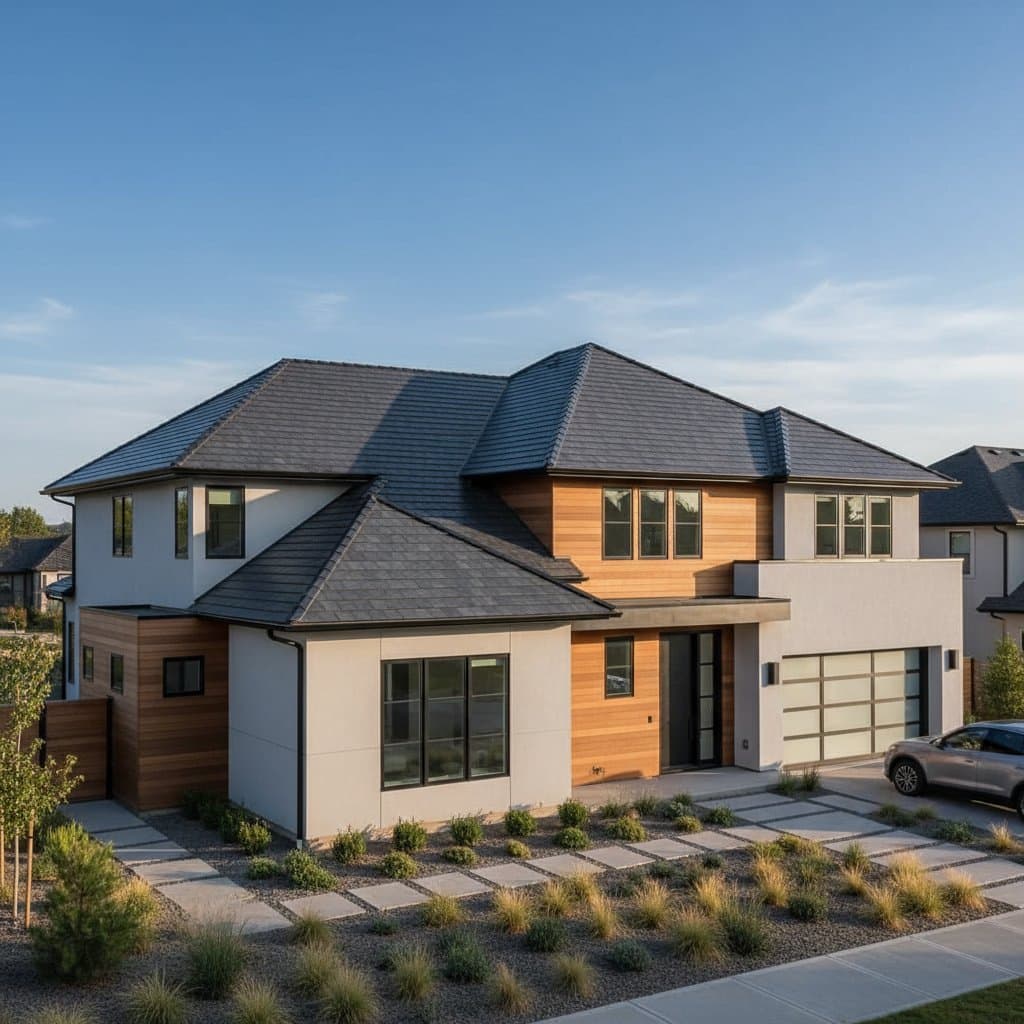Solar Shingles Close the Price Gap with Traditional Panels by 40 Percent
Market reports from leading U.S. installers and manufacturers reveal that the cost difference between solar shingles and conventional rooftop panels has narrowed by nearly 40 percent. Once reserved for high-end homes, solar shingles now approach the price point of standard photovoltaic systems. This shift signals a potential change in residential solar adoption, blending energy generation directly into roofing materials.
Scaling Production Lowers Costs Significantly
As building-integrated photovoltaics, solar shingles previously faced challenges with high expenses and limited output. Prices once exceeded those of rooftop panels by 60 to 80 percent due to complex assembly and low production runs. Facilities expanded by GAF Energy in California and CertainTeed in Pennsylvania have changed this equation.
Current quotes for complete solar shingle systems range from $3.50 to $4.50 per watt, compared to $2.80 to $3.20 per watt for standard rooftop solar. The previous gap of more than $2.00 per watt has diminished by about 40 percent in the past two years. Analysts attribute these gains to automated manufacturing lines, streamlined mounting hardware, and increased competition among domestic suppliers.
Integrated supply chains now allow for full solar roof deliveries at competitive rates, states Martin DeBenedictis, vice president of operations at GAF Energy. He predicts additional price drops as output volumes grow further.
Streamlined Installations Reduce Labor Costs
Installation demands previously limited solar shingles to niche applications. Traditional panels mount on rails or clamps atop existing roofs, whereas shingles replace the roof surface itself. This integration once required specialized crews, longer timelines, and coordination between roofers and electricians.
New interlocking designs and simplified wiring resolve these barriers. Data from the National Renewable Energy Laboratory indicates that labor time for a 7-kilowatt solar shingle system has decreased from over 60 hours to roughly 35 hours. These reductions cut soft costs, which can represent up to half of total residential system expenses.
Standardized fittings and minimal roof penetrations enable general roofing contractors to manage most of the work, according to Lauren Michaels, director of product development at CertainTeed Solar. The latest shingle models incorporate fewer electrical junctions and lightweight materials, improving both handling and long-term performance.
Combining Performance with Aesthetic Integration
Homeowners appreciate solar shingles for their flush fit with the roofline, avoiding the bulk of raised panels. In upscale communities, developers now include these systems as standard features, emphasizing their visual harmony.
These shingles deliver efficiencies of 15 to 18 percent, trailing the 20 to 22 percent of premium crystalline silicon panels. Yet, enhanced thermal management and ventilation in recent models narrow this gap. Certain setups now produce equivalent energy to traditional panels, factoring in roof area constraints and transmission losses.
Choices extend beyond raw efficiency, as noted by energy consultant Brian Connors of Arlington Solar Advisors. Savings on roof replacements and boosted curb appeal enhance the total value proposition, despite slight performance variances.
Policy Support and Local Manufacturing Enhance Value
Federal measures accelerate this affordability trend. The Inflation Reduction Act offers expanded tax credits for installations using American-made components. Solar shingles, produced domestically, often qualify for the full incentive, surpassing many systems reliant on imported panels.
This advantage lowers effective costs for consumers. A complete U.S.-sourced solar roof secures better rebates than setups with overseas parts. Additional state programs in Florida, Texas, and Colorado provide property tax exemptions for integrated solar roofs, bolstering financial incentives.
The policy environment now favors these solutions, remarks energy policy analyst Carla Nguyen of the Solar Energy Industries Association. Domestic production incentives provide U.S. manufacturers with a pricing edge not available before.
Roofing Industry Collaborations Expand Availability
Roofing firms team up with engineering, procurement, and construction specialists, as well as panel producers, to venture into solar. Large distributors carry solar shingles alongside conventional asphalt and composite varieties, broadening access beyond solar-only outlets.
Owens Corning and Malarkey Roofing Products roll out certification training for solar roof installers. These efforts address workforce gaps that slow market growth. Roofers view solar integration as a natural extension, particularly during re-roofing projects where homeowners seek upgrades.
Every roof overhaul offers an opportunity to add energy generation, says Paul Rodriguez, senior manager at Owens Corning’s renewable division. Equipping contractors bridges the roofing and solar sectors more effectively.
Future Outlook and Competitive Landscape
Projections from Wood Mackenzie indicate that annual solar shingle capacity may exceed 500 megawatts within three years, if current pricing holds. This remains small compared to the gigawatt-level residential panel sector, yet the segment demonstrates strong growth momentum.
Tesla’s Solar Roof maintains visibility, but rivals challenge its lead with accessible, cost-effective options. GAF Energy’s Timberline Solar and CertainTeed’s Apollo series build momentum via roofing partnerships. Installers report a doubling of inquiries for integrated systems over the last year, driven by homeowners refreshing aging roofs.
Upcoming competition will focus on durability and comprehensive warranties. Consumers demand shingles that last as long as conventional roofs, typically 25 to 30 years. Manufacturers provide combined assurances for structural and energy components to simplify long-term ownership.
Integrating Solar into Everyday Home Design
This 40 percent price decline establishes solar shingles as a viable mainstream choice for U.S. residences. As costs align and processes simplify, integrated roofs evolve from premium add-ons to everyday solutions.
Builders, installers, and homeowners gain varied options that unite utility and style. Achieving widespread use requires workforce development, quality controls, and emphasis on lifetime savings. Linking roofing expertise with solar innovation paves the way for energy-efficient homes ahead.
